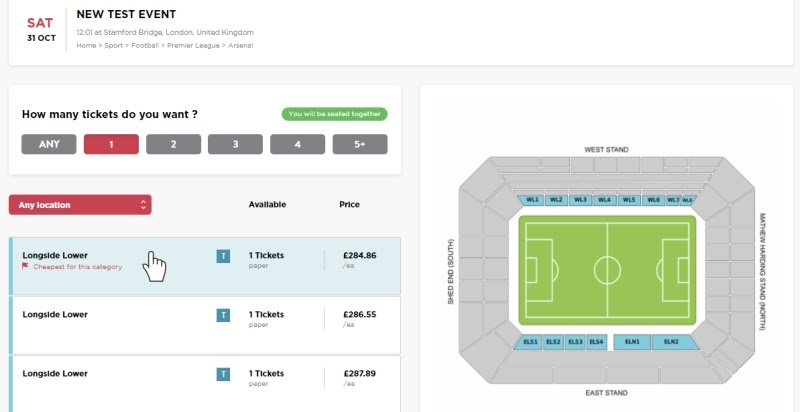Online marketplaces are grabbing attention like never before. Not only has the Covid-19 pandemic put the already fast-growing e-commerce sector on steroids, but growing numbers of digital entrepreneurs are chasing the marketplace model’s promise of rapid growth via third-party sellers.
For those who want to get their marketplace up and running quickly there are several off-the-shelf and plug-and-play solutions to choose from. Options range from full-stack platforms, such as Sharetribe, Mirakl and CS-Cart, to general e-commerce frameworks like WooCommerce and Shopify, which can be extended with the Dokan multi-vendor plugin or the Webkul marketplace app.
Unfortunately, the easy-to-use marketing spiel of turnkey software providers often conceal pitfalls that have resulted in the sudden death of many a startup dream. At CobbleWeb we field numerous enquiries every month about how to get a marketplace up and running. Invariably, we receive lots of queries from startups that have hit a dead end due to choosing the wrong technology:
“Hi there, I came across your website after searching for marketplace developers. I’m currently building a marketplace for custom sneaker artists using WordPress, WooCommerce, and Dokan. To make a long story short, it sucks and I’m very unhappy with all the bugs and frustrations I have. Do you guys develop marketplaces? If so, I’d love more information.”
CobbleWeb client
We’ve previously written about the general pros and cons of SaaS-type marketplace builders. This follow-up delves a bit deeper to clarify six specific hazards that are common to the off-the-shelf scenarios that we have come across: user experience, user flow, scalability, shipping, APIs, and revenue streams.
The user experience can make or break your marketplace
Bill Gurley, a well-known Silicon Valley VC investor, wrote a classic essay on what makes marketplaces successful back in 2012. Number one on his 10-point list? User experience.
“Great marketplaces do not simply aggregate a market; they enhance it. They leverage the connective tissue to offer the consumer a user experience that simply was not possible before the arrival of this new intermediary.”
Bill Gurley
Bill knows what he’s talking about; he invested in a host of successful marketplaces including eBay, Zillow, oDesk, Uber, OpenTable, GrubHub, and Yelp.
FanPass, an event ticket marketplace, is a good case in point. Event pages are at the core of their marketplace with each event page containing multiple ticket listings from different sellers. Popular events like a Liverpool vs Manchester United football match can easily see 1,500 plus users flock simultaneously to a single event page. If the page couldn’t provide an intuitive user experience to visitors, bounce rates would jump and ticket sales would dive.
CobbleWeb analysed user behaviour to improve key elements of the FanPass events pages. For example, we implemented a hover effect that highlights different sections on the stadium map when a user moves the cursor or a finger over one of the ticket listings.

Another element that we optimised was when a user selects (clicks on) a particular ticket listing. When this happens the exact seat is highlighted on the stadium map with a thumbnail view from the seat.
These UX optimisations had a two-fold effect. Firstly, it minimised the number of customer queries, reducing strain on customer service resources. Secondly, conversions happened faster and at higher rates. That means more money in the bank.
The bottomline – using a cookie-cutter user experience will not differentiate your platform from the competition. If UX is a key success factor (and it is 90% of the time) off-the-shelf solutions are simply not up to the task. Only a custom process can identify those unique opportunities to delight your users.
Flexible user journeys promote product uptake
A typical VC scorecard for marketplace startups usually emphasises that the value proposition needs to include an intuitive user journey. That’s because modern consumers want instant gratification. If they can’t find a product or service quickly or struggle to navigate category structures they will abandon your platform.
Our advice is to check the user journeys offered by ready-made solutions. If it doesn’t cover at least 80% of your requirements then there is a high risk that it’s not the right fit for your business. Of course, off-the-shelf software solutions will also not be helping you map out your optimal user journeys – you’ll have to do that yourself.
Here’s a case in point. One of our clients is busy pivoting from single-vendor e-commerce to a multi-vendor marketplace serving the fashion industry, a very competitive vertical. They originally kicked off with a Shopify multi-vendor template, but quickly started getting negative feedback from sellers.
Shopify was forcing additional steps when sellers added products that were not necessary for their business model. This caused unnecessary friction and seller abandonment. The clients then approached us to resolve the issue with a custom user journey.
Bonus tip! The ability to customise the user journey is also key to establishing product-market fit. Without it you can’t test assumptions and may miss the tweak that ignites user growth.
Scalability is key to the growth of your marketplace platform
One of our recent enquiries concerned a product marketplace built with WordPress and WooCommerce. The owner wanted to start scaling, but was held back due to the site’s slow performance and limited functionality. To his horror, optimising speed and expanding functionality would cost more than a brand-new custom solution.
The reality is that one-size-fits-all solutions that cater for all types of marketplaces add lots of bloat which can slow down your site significantly. These performance issues tend to increase as traffic grows. Magento’s marketplace extension, for instance, requires the installation of more than 5,000 files!
Since third-party software providers like Shopify or Sharetribe control your backend, there’s not much you can do to optimise your platform performance. The irony is that most marketplace startups only need a fraction of all those bells and whistles.
Specially developed tools or features are another powerful way to scale your marketplace. It is known as the ‘come for the tool, stay for the network’ strategy. For example, photography marketplace, Meero, entices photographers onto its platform with business management tools, while OpenTable uses reservation software to attract restaurateurs. This avenue is mostly closed to those making use of turnkey solutions.
Shipping can be a competitive advantage
When there is lots of competition in your vertical, shipping options and costs can be a deciding factor. Most ready-made marketplace solutions offer limited shipping options which could make your marketplace uncompetitive.
From Sharetribe’s community boards:
“The reason why I can’t fully use Sharetribe. There are no shipping options. You can only enter shipping costs once. It must be possible to enter at least 3 shipping options: nationwide, within the EU and worldwide. Depending on the location of the seller and the buyer, an option should be automatically selected during the ordering process.”
Sharetribe client
The ability to customise shipping for specific use cases can be a powerful differentiator. CobbleWeb’s client Affordable Art Fair follows a model in which the buyer pays the shipping cost which is then paid over to the seller who is responsible for shipping the artwork. Originally they used Magento, where shipping costs had to be added manually for each seller, which put a huge strain on administrative resources.
CobbleWeb stepped in and streamlined the process with an automated real-time solution which uses UPS to calculate shipping costs. It solved two additional challenges:
Some sellers use special packaging (which cost more) and were unhappy with the amount paid over to them. This was solved by allowing the admin to add a percentage onto the UPS calculation for each seller.
Many sellers also wanted to pass local shipping discounts onto buyers. Our answer was to split shipping into local and international options.
Without a user-friendly API you will lose high-volume sellers
Marketplaces are ecosystems that thrive on partnerships, and in the digital universe APIs (aka software interfaces) connect partner applications. A weak API means potential partners can’t join your marketplace ecosystem.
Large corporate sellers need your API for integration with their own platforms. They will only sign up to your marketplace if you make it easy for them to map and synchronise events between their platforms and yours. CobbleWeb built such an API for the FanPass marketplace which resulted in several large sellers joining and boosting revenue significantly.
In contrast, few off-the-shelf solutions allow API integration, and almost none allow seamless API integration with a wide range of seller e-commerce platforms such as WooCommerce and Shopify. Sharetribe tried to fill this gap with its Flex option, but that pretty much takes you back to square one – custom development.
So, if your target audience are mostly corporate sellers you are out of luck with an off-the-shelf solution.
Activating the right revenue streams for your business model
Off-the-shelf marketplace solutions are notoriously limited when it comes to monetisation. The rise of SaaS enabled marketplaces has made it even more challenging to integrate the right payment technology. This is especially important to consider in service marketplaces.
One of our clients built his marketplace with Sharetribe on a transaction-based revenue model. Feedback from sellers made it clear that his revenue should be subscription based. Sharetribe doesn’t have a built-in subscription option and its third-party workaround was too cumbersome. Which meant his whole platform had to be rebuilt.
Conclusion
Technically, a marketplace is an intricate digital ecosystem with many interconnected moving parts. This necessitates a responsive and adaptive approach to ensure each part serves user needs (of your unique business case) in optimal fashion.
That’s why rigid turnkey solutions rarely produce flourishing marketplaces. At some stage you are going to step into one of those pitfalls and have to reverse, rethink and redo your whole platform. Time, effort and money wasted, which could have been spent more productively.

